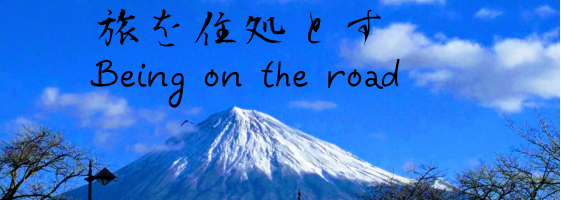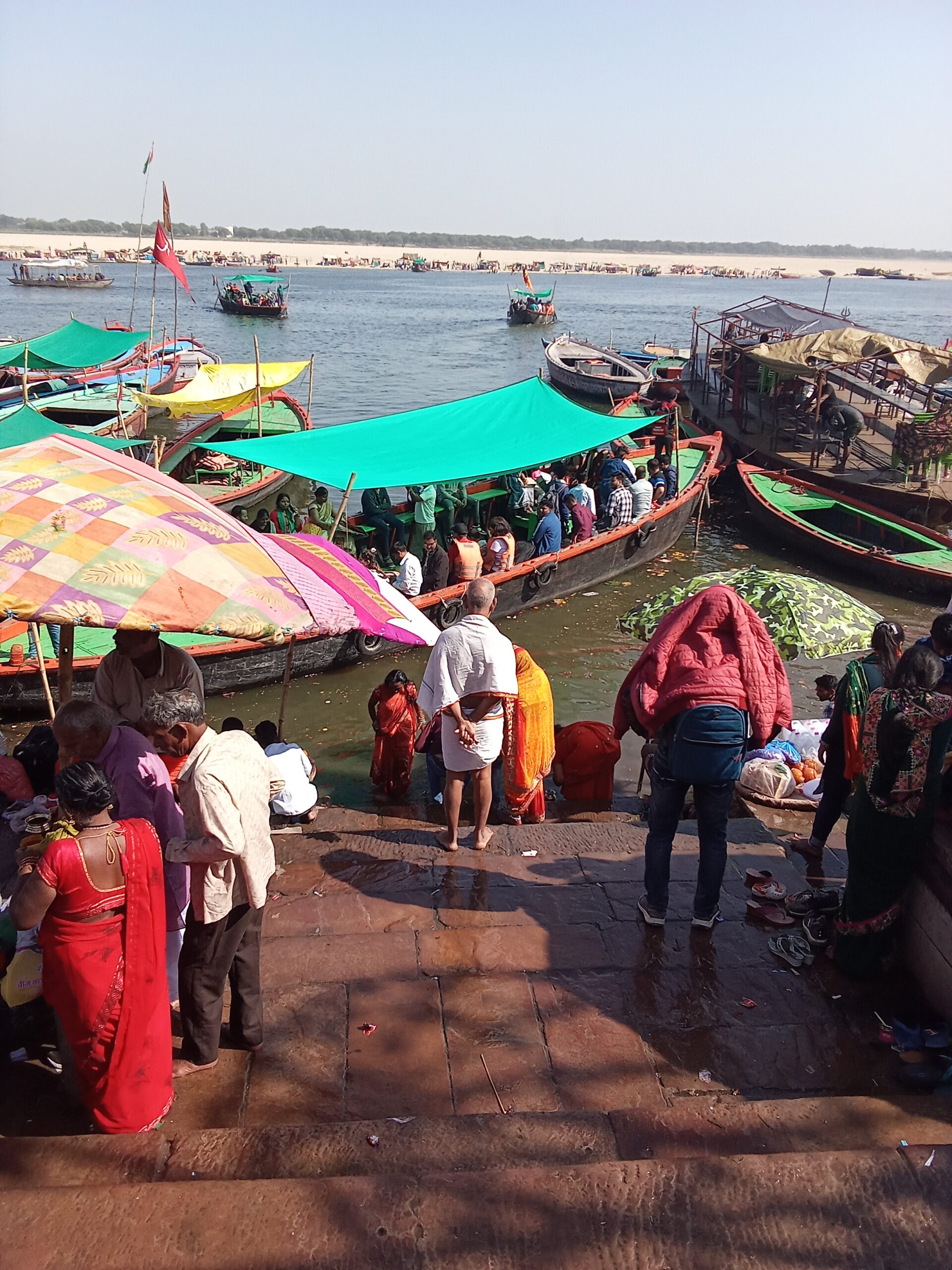In March 2024, after Delhi, I spent a week in Varanasi, India, the holiest city for Hindus. Although it was my first time in India, I had vaguely thought of visiting Varanasi ever since I started dreaming of a trip to India someday.
What Kind of City is Varanasi?
Varanasi is located along the Ganges River in North India. It was once the capital of an ancient kingdom and traditionally a center of politics, economy, and religion. Along the Ganges River, buildings line the banks, and numerous staircased bathing areas called “Ghats” are scattered throughout, with Hindu devotees continuously performing rituals all day long. It’s also one of India’s leading tourist destinations, said to attract over 10 million tourists annually.
Above the ghats, climbing the stairs, lies what is known as the Old City, with a labyrinth of narrow alleys winding between ancient buildings, where even cows and motorcycles pass through. The alleys are often littered with cow dung, making it difficult to walk if you’re not used to it. While there are hotels in this Old City, they are generally for experienced travelers; ordinary tourists are safer staying in hotels slightly away from the ghats in the city center.
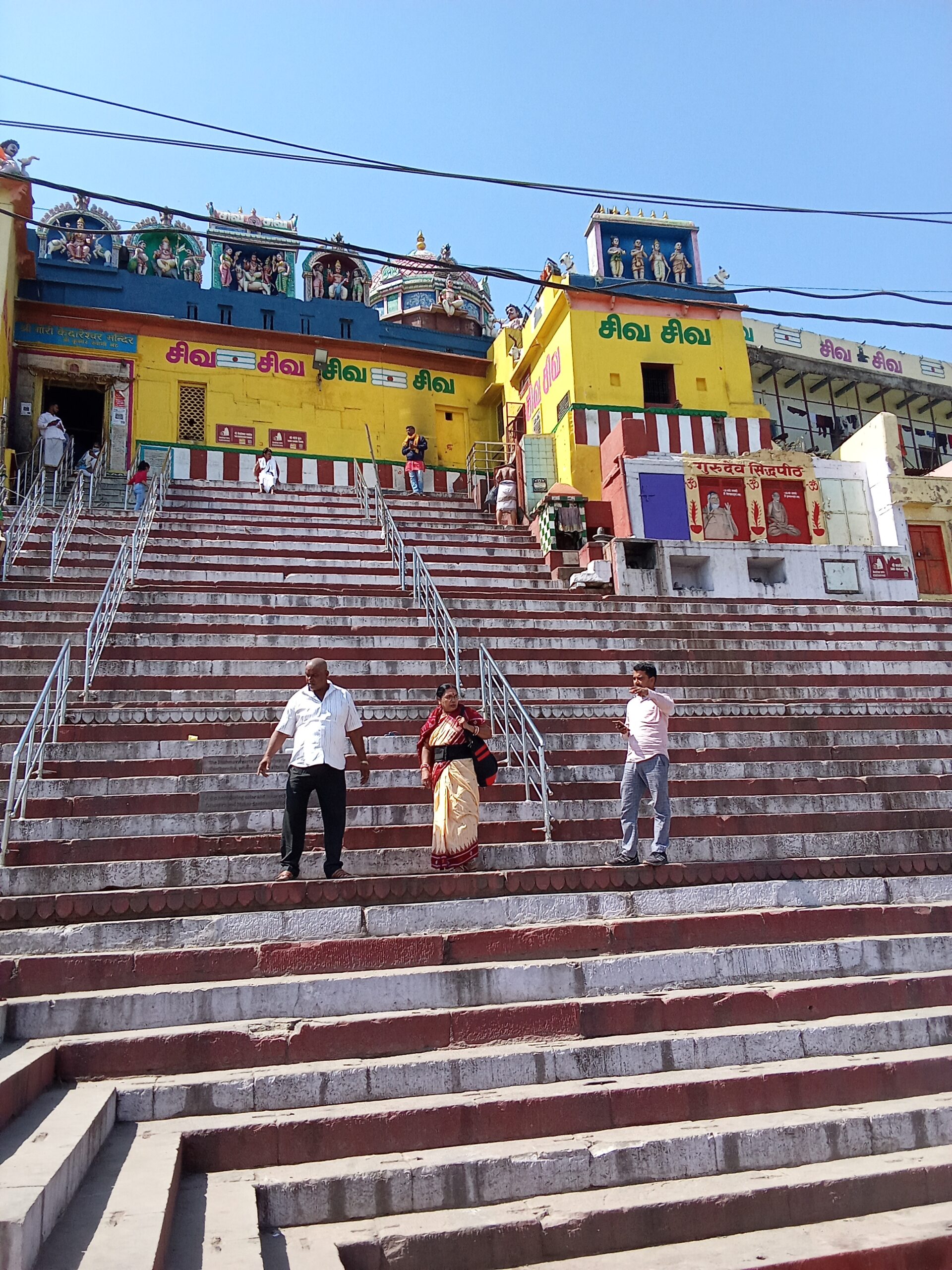
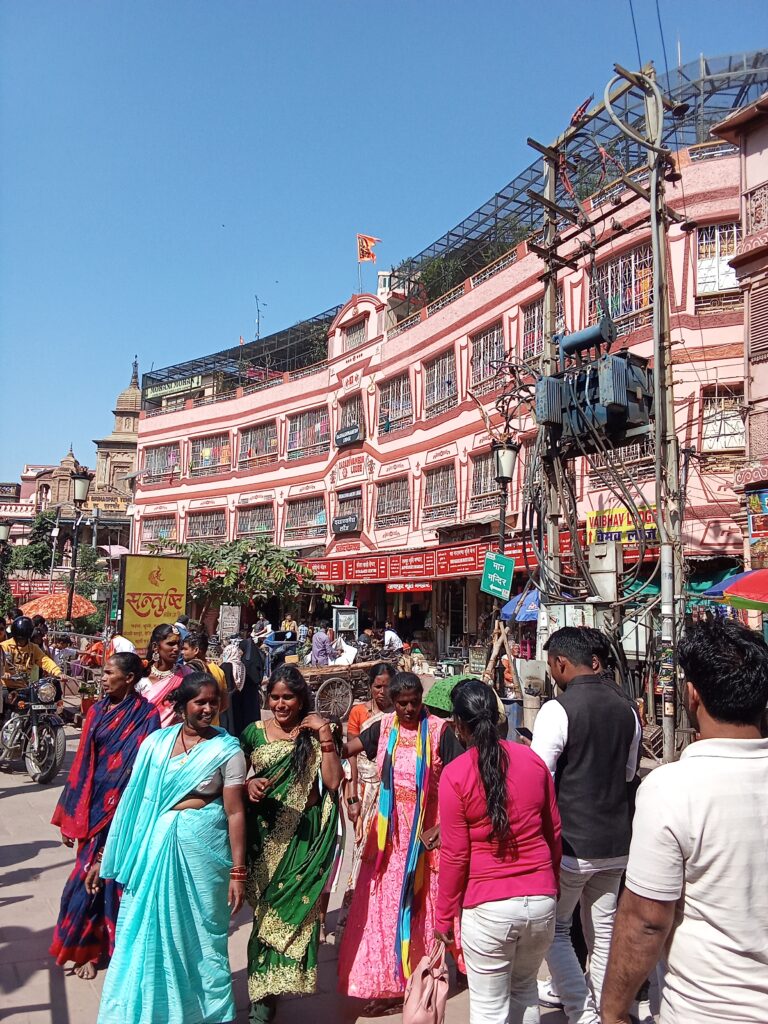
The Ghats and Cremation Grounds of the Ganges River
Ghats
Buildings only exist on the left side of the Ganges River, facing upstream. The opposite bank of the ghats is just an empty riverside. There are many ghats, large and small, from upstream to downstream. Among them, the most famous in Japan is the largest one in the center, “Dashashwamedh Ghat.” This is the most crowded and picturesque, often featured in TV programs and tourist photos. The ghats on the outskirts have fewer people, allowing for more relaxed bathing, but perhaps Indians, too, prefer bathing in the central area.
Cremation Grounds
There are two cremation grounds where bodies are cremated day and night. The brought-in bodies, wrapped in dazzling cloth, are dipped in the Ganges River and then cremated. The ashes are then scattered into the Ganges.
While some bodies are transported after death, there are also facilities (called hospices, though they were stark concrete buildings) where people nearing death come to await their end with their relatives. As these cremation grounds are religiously significant sites, photography is absolutely forbidden. However, it is possible to enter the premises with a guide and witness up close the bodies wrapped in cloth laid out in open-air spaces on the riverside, bodies currently being cremated, and hot areas where cremations had just taken place. It was explained that as one ascends from the riverside to the embankment, the cremation grounds are for higher castes, and the indoor cremation grounds within buildings are for very high-ranking individuals.
Free Guide, But Donations Required
While observing the cremation ground from an adjacent ghat, I was approached by someone offering a free guide. I was confident I could refuse any later demands for money, so I followed him. The scene inside the cremation ground, as described above, was shocking. After being shown around, we went inside a building, where another person asked me to donate for firewood. When I mentioned the guide said it was free, they replied that the guide was free, but a donation was necessary. They asked for a minimum of 1500 rupees (just under 3000 yen) with such an entitled attitude that I refused and left. They should have stated that from the beginning. If you plan to visit the cremation ground and are willing to donate for firewood, you can enter inside, and having a guide you’re comfortable with might be worthwhile.
Evening Puja (Aarti)
Every evening, a ritual called Puja (or Aarti) is performed at the ghats. This involves offering prayers with fire on a stage set up at the ghat. It’s a lively event with prayers and music played through speakers. Many people gather at the central Dashashwamedh Ghat to watch. There are paid seats closer to the stage, but also free seating further back. I arrived two hours early and sat in the front row of the free section.
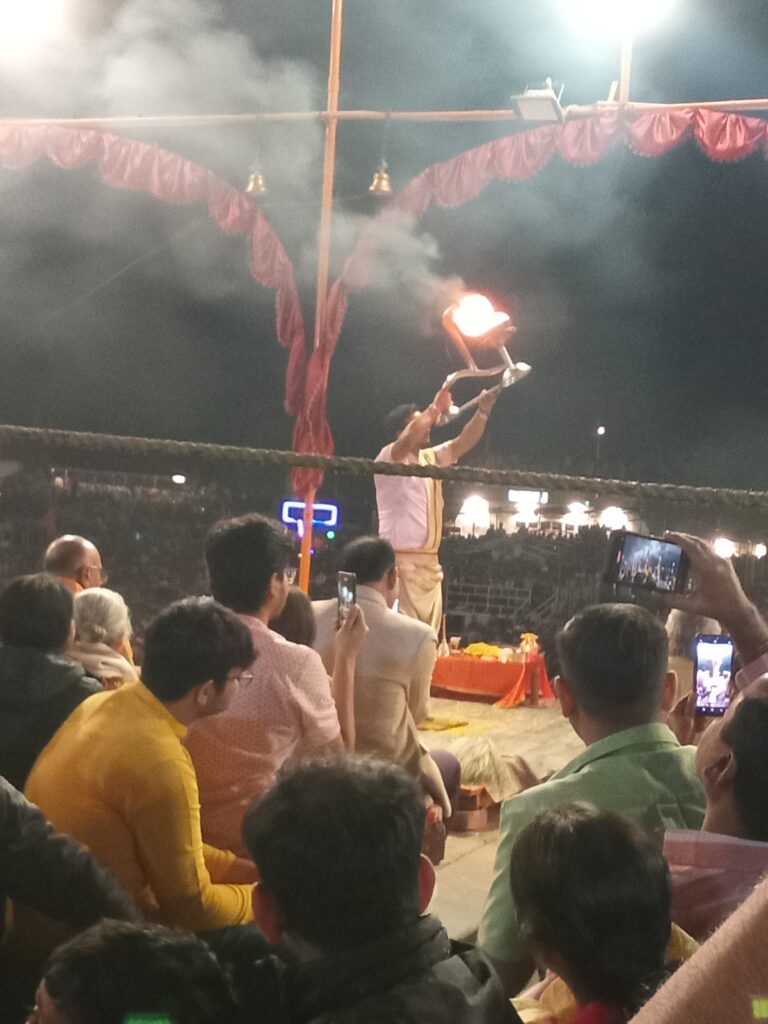
The ritual began while it was still bright, but as darkness fell and the fire glowed in the night, the audience grew to include many standing spectators. Several times during the ritual, the audience loudly chanted something along with the prayers, but unfortunately, I couldn’t understand what they were saying. To be honest, I had imagined a more ancient, traditional ceremony, so the loud music blaring from speakers made me feel like “this isn’t it.” This is purely my personal impression. Most of the gathered audience seemed satisfied.
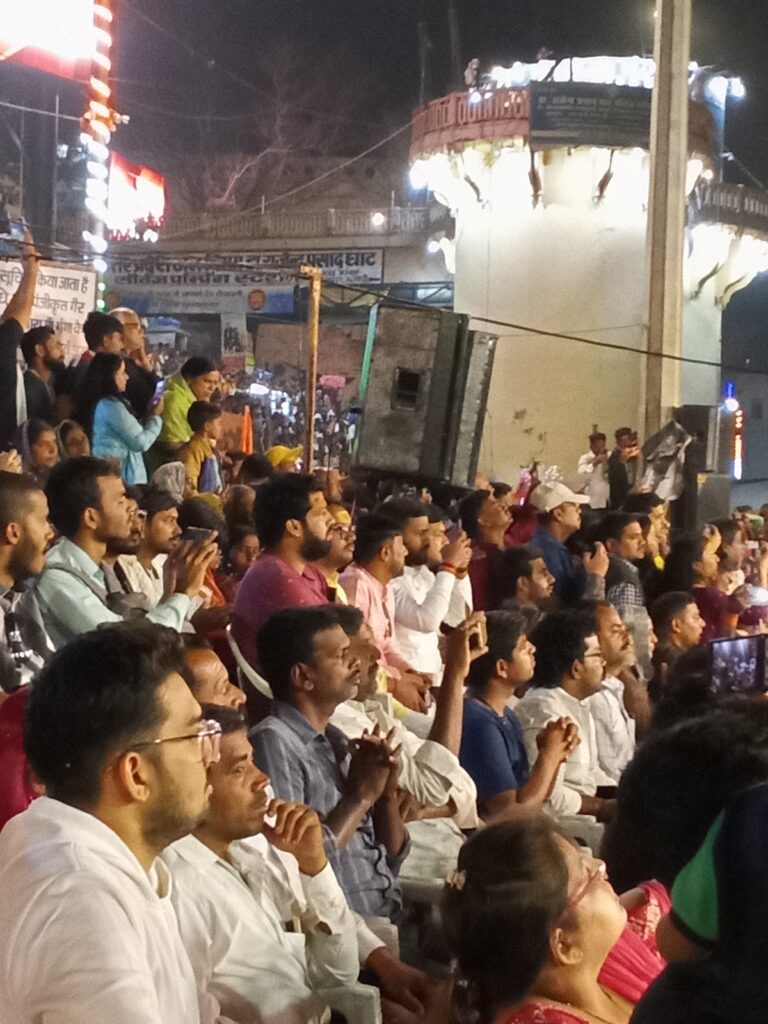
Residential Areas for Ordinary Citizens
A little distance from the Ganges River and the Old City lies the area where ordinary citizens live. Here too, the interior of the residential area is a labyrinth of narrow alleys. If you search for walking routes on Google Maps, it sometimes leads you through incredibly narrow alleys. Even though you know you can pass through, you might wonder, “Isn’t there another way?”
However, walking through such alleys can also lead to unexpected good experiences. You’ll encounter real ordinary people of the city, and if they realize you’re Japanese, they’ll often greet you very friendly or overwhelm you with handshakes. This is completely different from the overcharging scammers at tourist spots; I believe these are the true people of India. Not just in Varanasi, but merchants and taxi drivers at tourist destinations are not the only type of Indians. Please keep in mind that travel blogs and YouTube channels you see beforehand only show one side of the story.
